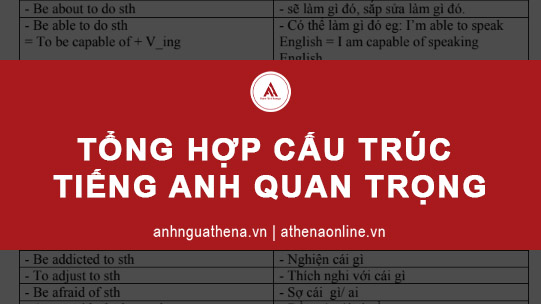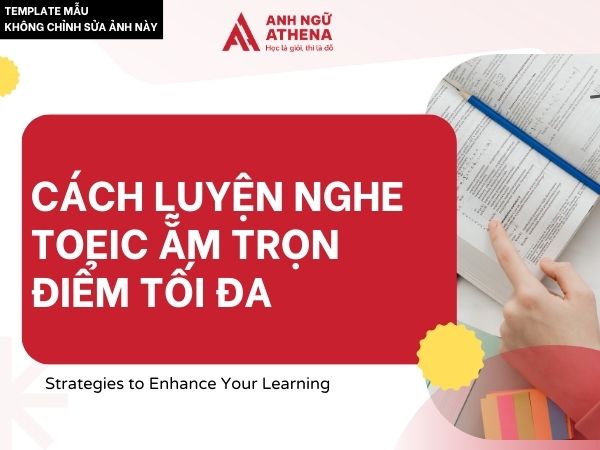Cô Đỗ Vân Anh |
KÌ THI TỐT NGHIỆP TRUNG HỌC PHỔ THÔNG QUỐC GIA NĂM 2020 Bài thi: NGOẠI NGỮ; Môn thi: TIẾNG ANH SỞ GIÁO DỤC & ĐÀO TẠO THÁI NGUYÊN – LẦN 2
|
Mark the letter A, B, C, or D to indicate the correct answer to each of the following questions.
Question 1. I’m on cloud nine because the lecturer __________ me a compliment at class this morning.
A. praised B. paid C. gained D. put
Question 2. As the speaker finished his speech, all the audience gave him a __________ of applause.
A. ring B. circle C. round D. wheel
Question 3. We had dinner __________ a very nice restaurant.
A. from B. on C. above D. in
Question 4. The thief admitted __________ the red mobile phone last week.
A. stealing B. to steal C. stolen D. steal
Question 5. Deforestation has driven wild animals to the __________ of extinction.
A. brim B. border C. verge D. margin
Question 6. I always get __________ in my stomach before visiting the dentist.
A. worms B. butterflies C. crabs D. hedgehogs
Question 7. They are going to buy a new house, __________?
A. aren't they B. won't they C. don't they D. are they
Question 8. There was a(n) __________ match between Viet Nam and Laos on VTV3 last week.
A. nation B. native C. national D. international
Question 9. He did not particularly want to __________ any competitive sports.
a. take up B. get up C. use up D. go out
Question 10. She works seven days __________ week.
A. a B. an C. the D. Ø (no article)
Question 11. If I had enough money, I __________ abroad to improve my English.
A. will go B. went C. would go D. have gone
Question 12. I __________ four quizzes and five tests so far this semester.
A. had B. was having C. have D. have had
Question 13. __________ the difficulty, they managed to solve the problem.
A. Because B. However C. Although D. In spite of
Question 14. As soon as the telephone __________, he left his house.
A. rang B. ringing C. ring D. will ring
Question 15. The children __________ that school receive a good education.
A. to attending B. to be attended C. attended D. attending
Mark the letter A, B, C, or D to indicate the word whose underlined part differs from the other three in pronunciation in each of the following questions.
Question 16. A. cameras B. seasons C. games D. profits
Question 17. A. chemist B. minute C. night D. garlic
Mark the letter A, B, C, or D to indicate the word that differs from the other three in the position of primary stress in each of the following questions.
Question 18. A. magazine B. dangerous C. popular D. applicant
Question 19. A. decide B. daughter C. provide D. enjoy
Mark the letter A, B, C, or D to indicate the word(s) CLOSEST in meaning to the underlined word(s) in each of the following questions.
Question 20. Such problems as haste and inexperience are a universal feature of youth.
A. marked B. separated C. hidden D. shared
Question 21. Sports and festivals form an integral part of every human society.
A. informative B. delighted C. essential D. exciting
Mark the letter A, B, C, or D to indicate the word(s) OPPOSITE in meaning to the underlined word(s) in each of the following questions.
Question 22. After five days on trial, the court found him innocent of the crime and he was released.
A. guilty B. naive C. innovative D. benevolent
Question 23. Don't put words into my mouth! I never said I hate roses.
A. interrupt rudely B. quote exactly C. mention wrongly D. ask politely
Mark the letter A, B, C, or D to indicate the option that best completes each of the following exchanges.
Question 24. Tom and Jane are having lunch at a restaurant.
- Tom: “This soup tastes awful.”
- Jane: “________________”
A. I don't think so. It tastes fine to me.
B. I couldn't agree more. I find it delicious.
C. You are welcome.
D. You're right. It tastes fine to me.
Question 25. Mason and Lydia are talking about some kinds of films.
- Mason: “In my opinion, horror films are really exciting.”
- Lydia: “_______________. They make me scared and frightened so much.”
A. You shouldn't have said that. B. I don't think so.
C. What an opinion! D. I don't think so, either.
Mark the letter A, B, C, or D to indicate the underlined part that needs correction in each of the following questions.
Question 26. Some newcomers are easily embarrassing when they can't express themselves well in English.
A. easily B. embarrassing C. themselves D. in
Question 27. Mrs. Stevens, along with her cousins from Mexico, are planning to attend the festivities.
A. with her cousins B. from C. are D. attend
Question 28. Plants absorb water and nutrients and anchoring themselves in the soil with their roots.
A. absorb water B. anchoring C. themselves D. with
Mark the letter A, B, C, or D to indicate the sentence that is closest in meaning to each of the following questions.
Question 29. I don't think Max broke your vase because he wasn't here then.
A. Max wouldn't have broken your vase because he wasn't here then.
B. Max was likely to break your vase because he wasn't here then.
C. Max can't have broken your vase because he wasn't here then.
D. Max wouldn't break your vase because he wasn't here then.
Question 30. Lan is the best student at English in my class.
A. Lan is the better student at English in my class.
B. No student in my class is as good at English as Lan is.
C. Lan is the worst student at English in my class.
D. Lan is not as good at English as other students in my class.
Question 31. Charlie said, “Tom had an accident last week”.
A. Charlie said Tom had an accident the following week.
B. Charlie said Tom had an accident the week before.
C. Charlie said Tom had had an accident the following week.
D. Charlie said Tom had had an accident the previous week.
Mark the letter A, B, C, or D to indicate the sentence that best combines each pair of sentences in the following questions.
Question 32. I did not go to university when I was young. That's why I do not have a good job now.
A. Had I gone to university when I was young, I would have a good job now.
B. Had I gone to university when I was young, I would have had a good job.
C. If I had not gone to university when I was young, I wouldn't have a good job now.
D. If I have gone to university when I was young. I would have a good job.
Question 33. Overeating is a cause of several deadly diseases. Physical inactivity is another cause of several deadly diseases.
A. Apart from physical activities, eating too much also contributes to several deadly diseases.
B. Overeating and physical inactivity are caused by several deadly diseases.
C. Not only overeating but also physical inactivity may lead to several deadly diseases.
D. Both overeating and physical inactivity result from several deadly diseases.
Read the following passage and mark the letter A, B, C, or D to indicate the correct word or phrase that best fits each of the numbered blanks.
Wuhan Coronavirus Looks Increasingly Like a Pandemic, Experts Say
Rapidly rising caseloads alarm researchers, who fear the virus may make its way across the globe. (34) __________ scientists cannot yet predict how many deaths may result. The Wuhan coronavirus spreading from China is now likely to become a pandemic (35) __________ circles the globe, according to many of the world's leading infectious disease experts. The prospect is daunting. A pandemic - an ongoing epidemic on two or more continents - may well have global consequences, despite the extraordinary travel restrictions and quarantines now imposed by China and (36) __________ countries, including the United States.
Scientists do not yet know how (37) __________ the new coronavirus is, however, so there is uncertainty about how much damage a pandemic might cause. Nevertheless, there is growing consensus that the pathogen is readily transmitted between humans. The Wuhan coronavirus is spreading more like influenza, which is highly (38) __________ than like its slow-moving viral cousins, SARS and MERS, scientists have found. “It's very, very transmissible, and it almost certainly is going to be a pandemic,” said Dr. Anthony S. Fauci, director of the National Institute of Allergy and Infectious Disease.
(Adapted from https://www.nytimes.com/2020/02/02/health/coronavirus-pandemic-china.html)
Question 34. A. So B. However C. Because D. Although
Question 35. A. who B. why C. which D. where
Question 36. A. other B. more C. another D. others
Question 37. A. wonderful B. unhealthy C. dead D. lethal
Question 38. A. transmissible B. important C. legal D. necessary
Read the following passage and mark the letter A, B, C, or D to indicate the correct answer to each of the questions.
Recent technological advances in manned and unmanned vehicles, along with breakthroughs in satellite technology and computer equipment, have overcome some of the limitations of divers and diving equipment for scientists doing research on the great oceans of the world. Without a vehicle. divers often became sluggish, and their mental concentration was severely limited. But today, most oceanographers avoid the use of vulnerable human divers, preferring to reduce the risk to human life and make direct observations by means of instruments that are towered into the ocean, from samples taken from the water, or from photographs made by orbiting satellites. Direct observations of the ocean floor can be made not only by divers but also by deep-diving submarines in the water and even by the technology of sophisticated aerial photography from vantage points above the surface of more than seven miles and cruise at depths of fifteen thousand feet. In addition, radio-equipped buoys can be operated by remote control in order to transmit information back to land-based laboratories via satellite.
Particularly important for ocean study are data about water temperature, currents, and weather. Satellite photographs can show the distribution of sea ice, oil slicks, and cloud formations over the ocean. Maps created from satellite pictures can represent the temperature and the color of the ocean's surface, enabling researchers to study the ocean currents from laboratories on dry land. Furthermore, computers help oceanographers to collect, organize, and analyze data from submarines and satellites. By creating a model of the ocean's movement and characteristics, scientists can predict the patterns and possible effects of the ocean on the environment.
Recently, many oceanographers have been relying more on satellites and computers than on research ships or even submarine vehicles because they can supply a greater range of information more quickly and more effectively.
Question 39. With what topic is the passage primarily concerned?
A. Communication among drivers
B. Technological advances in oceanography
C. Direct observation of the ocean floor
D. Undersea vehicles
Question 40. The word “sluggish” in paragraph 1 is closest in meaning to
A. nervous B. confused C. slow moving D. very weak
Question 41. This passage suggests that the successful exploration of the ocean depends upon
A. the limitations of diving equipment
B. radios that divers use to communicate
C. controlling currents and the weather
D. vehicles as well as divers
Question 42. The word “cruise” in paragraph 1 could best be replaced by
A. travel at a constant speed
B. function without problems
C. stay in communication
D. remain still
Question 43. Which of the following are NOT shown in satellite photographs?
A. The temperature of the ocean's surface
B. Cloud formations over the ocean
C. A model of the ocean's movements
D. The location of sea ice
Read the following passage and mark the letter A, B, C, or D to indicate the correct answer to each of the questions.
The Nobel Peace Prize is awarded annually and the first woman to win this prize was Baroness Bertha Felicie Sophie von Suttner in 1905. In fact, her work inspired the creation of the Prize. The first American woman to win this prize was Jane Addams, in 1931. However, Addams is best known as the founder of Hull House.
Jane Addams was born in 1860 into a wealthy family. She was one of a small number of women in her generation to graduate from college. Her commitment to improving the lives of those around her led her to work for social reform and world peace. In the 1880s Jane Addams traveled to Europe. While she was in London, she visited a “settlement house” called Toynbee Hall. Inspired by Toynbee Hall, Addams and her friend, Ellen Gates Starr, opened Hull House in a neighborhood of slums in Chicago in 1899. Hull House provided a daycare center for children of working mothers, a community kitchen, and visiting nurses. Addams and her staff gave classes in English literacy, art, and other subjects. Hull House also became a meeting place for clubs and labor unions. Most of the people who worked with Addams in Hull House were well educated, middle-class women. Hull House gave them an opportunity to use their education and it provided a training ground for careers in social work.
Before World War I, Addams was probably the most beloved woman in America. In a newspaper poll that asked, “Who among our contemporaries are of the most value to the community?”, Jane Addams was rated second, after Thomas Edison. When she opposed America's involvement in World War I, however, newspaper editors called her a traitor and a fool, but she never changed her mind. Jane Addams was a strong champion of several other causes. Until 1920, American women could not vote. Addams joined in the movement for women's suffrage and was a vice president of the National American Woman Suffrage Association. She was a founding member of the National Association for the Advancement of Colored People (NAACP), and was president of the Women's International League for Peace and Freedom. Her reputation was gradually restored during the last years of her life. She died of cancer in 1935.
Question 44. With which of the following subjects is the passage mainly concerned?
A. The first award of the Nobel Peace Prize to an American woman
B. A woman's work for social reform and world peace
C. The early development of Social Work in America
D. Contributions of educated women to American Society
Question 45. The word “commitment” in paragraph 2 is closest in meaning to
A. involvement B. obligation C. dedication D. enthusiasm
Question 46. Jane Addams was inspired to open Hull House because
A. it gave educated women an opportunity to use their education and develop careers in social work
B. she traveled to Europe in the 1880s
C. she visited Toynbee Hall
D. she was invited by a “settlement house” in Chicago
Question 47. The word “it” in paragraph 2 refers to
A. opportunity B. Hull House C. meeting place D. Toynbee Hall
Question 48. The word “contemporaries” in paragraph 3 is closest in meaning to
A. people of the same time
B. famous people still alive
C. elected officials
D. people old enough to vote
Question 49. According to the passage, Jane Addams' reputation was damaged when she
A. allowed Hull House to become a meeting place for clubs and labor unions
B. joined in the movement for women's suffrage
C. became a founding member of the NAACP
D. opposed America's involvement in World War I
Question 50. Which of the following is TRUE, according to the passage?
A. The work of Baroness Bertha Felicie Sophie von Suttner was an inspiration to Jane Addams.
B. Jane Addams is most famous for her opening of Hull House.
C. Those who lived near Hull House had very poor literacy skills.
D. Jane Addams considered herself as a citizen of the world rather than of one particular country.
Link tải đề thi thử lần 2 môn Anh Sở GD&ĐT Thái Nguyên tại đây.
Link tải bài giải chi tiết đề thi thử lần 2 môn Anh sở GD&ĐT Thái Nguyên tại đây.















![[Cập nhật] Lịch thi TOEIC 2025 Quý 1 tại IIG Việt Nam](https://anhnguathena.vn/upload/ban-sao-cua-template-bai-viet-seo-6.png?v=1.0.0)





